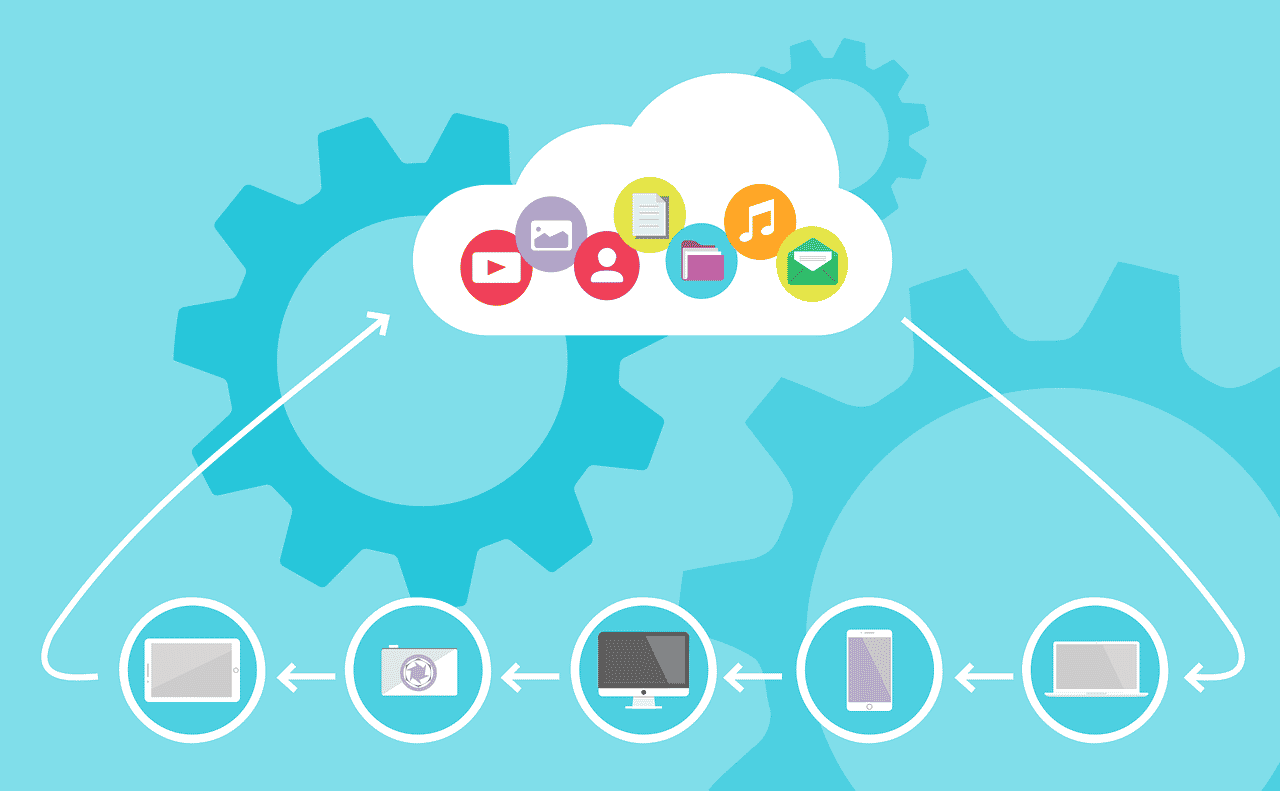- Introduction
- What is ServiceNow?
- Why use ServiceNow?
- Key Features of ServiceNow
- History of ServiceNow
- Who uses ServiceNow?
- Products of ServiceNow
- How to get access to ServiceNow
- Create a Report in ServiceNow:
- Best Practices of using ServiceNow
- Top ServiceNow Interview Questions and Answers
- ServiceNow Architecture:
- ServiceNow Applications:
- Creating A Personal Developer Instance
- FAQs
- Introduction
- What is ServiceNow?
- Why use ServiceNow?
- Key Features of ServiceNow
- History of ServiceNow
- Who uses ServiceNow?
- Products of ServiceNow
- How to get access to ServiceNow
- Create a Report in ServiceNow
- Best Practices of using ServiceNow
- Top ServiceNow Interview Questions and Answers
- ServiceNow Architecture
- ServiceNow Applications
- Creating A Personal Developer Instance
- FAQs
Introduction
The IT industry needs optimal efficiency in its enterprise, which is not an easy task. Traditional practices are still in use, but they are not beneficial as they can slow down the process considerably. So, here comes ServiceNow into view, which has become a complete packed solution for IT Industries. ServiceNow is a digital service by ServiceNow Consultants that provides cloud platforms at the enterprise level to organizations.. ServiceNow automates cloud-based operations and daily work tasks. It is also seen that Businesses who started using ServiceNow showed a big difference in their overall improvements and returns. There are other alternatives, too, such as Microsoft, IBM, SAP, Broadcom, etc. But still, ServiceNow is becoming one of the most used platforms by organizations. There can be several reasons to choose ServiceNow for their work.
This article will discuss ServiceNow, its features, how to use it effectively, the products, and much more.
What is ServiceNow?
ServiceNow is software based on the cloud, providing IT services for automating business tasks and their management. ServiceNow is developed to create the workflow for enterprises and automate various processes approved by ITIL principles (Information Technology Infrastructure Library). ServiceNow allows you to customize itself based on your requirements. ServiceNow uses Machine Learning technology to automate the processes and create workflows.
Why use ServiceNow?
There are various reasons for using ServiceNow. Some of the reasons are as follows:
- ServiceNow allows its employees, stakeholders, and customers to modify the platform for their specific operations and workflows.
- It helps enterprises make a leap and come out of the crowd by providing service levels that will improve their workflow and automate tasks.
- ServiceNow helps create a structured work environment pattern and smoothens business processes with its artificial intelligence.
- Various customer dealing organizations can get better from this ServiceNow by providing a customer-friendly self-service portal where they can easily get what they want.
- ServiceNow is a SaaS (Software as a Service); therefore, you don’t need to configure your systems or take care of the new updates of the software. To learn more about the same, you can take up a SaaS in Cloud Computing course and upskill.
- The workflow becomes quick if you use ServiceNow, and almost every enterprise-level process can be automated using it.
- ITSM (IT Service Management) can be improved by up to 60% using ServiceNow.
- You can also easily manage HR services by implementing ServiceNow to the existing core HR and talent management applications.
Key Features of ServiceNow
- In this section, we will talk about some key features of ServiceNow:
- ServiceNow enables instance-based implementation.
- You can easily track assets in ServiceNow.
- The approval process can be controlled.
- Its activity dashboard can be used to track the activities.
- The improved operational tracking helps to track the operations performed.
- It doesn’t require much or complex configurations to get started with an enterprise.
- ServiceNow provides better customer support with negligible maintenance costs.
- You can visualize the real-time analysis of your processes.
- ServiceNow security gives confidentiality and integrity of data.
- You can easily customize the settings of ServiceNow based on your requirements.
History of ServiceNow
ServiceNow was founded in 2003 by Fred Luddy. When he founded ServiceNow, he was the former CTO of Peregrine Systems and Remedy Corporation. The headquarters of this company was in San Diego.
In 2006, the company was named ServiceNow, and it opened its first office in Silicon Valley in 2007.
In 2011, it partnered with Accenture and had 275 employees in its offices from several locations such as Chicago, San Diego, Atlanta, New York, London, and Frankfurt.
In 2012, ServiceNow launched its IPO with a $210 Million valuation.
In 2017, ServiceNow acquired a UI/UX company named Telepathy.
In October 2019, the company’s CEO was Bill McDermott, the former CEO of SAP SE, at the end of that year.
Who uses ServiceNow?
ServiceNow is used to meet business goals and maintain IT services. The people who use ServiceNow for multiple purposes are as follows:
- IT Staff: IT employees use ServiceNow to handle their IT needs and business services.
- Developers: Developers use this platform to create new functionalities that will extend more features and configurations.
- Support Teams: The organization’s support teams use this to support the organization’s employees and other management staff.
- Admins: Administrators can access various management services of ServiceNow, such as roles, tasks, delivery, and access to the users of this platform.
- Facilitator: They use it to deploy new processes in the applications and to extend the standard configurations for more usability.
Products of ServiceNow
ServiceNow offers a range of products to enterprises based on their needs. Some useful products of ServiceNow are listed below:
Automating applications: ServiceNow offers a wide range of products that can be used to automate several business tasks. ServiceNow helps to automate the maintenance of service health and reduces manual intervention.
Business Management Tools: The Business Management tools of ServiceNow are handy for business planning and execution. You can easily find the areas where you need to focus for the business development, and it gives you solutions that can accelerate your business.
Customer Service Management Tool: ServiceNow also has a tool that can automatically help you manage your relationships with customers. It allows you to connect with your customers effectively and provide them with solutions to their queries very quickly. This results in increased satisfaction of customers that will eventually give more business.
Security Management: The security tools of ServiceNow give you access to the dashboard where you can find the vulnerabilities in your applications and efficiently fix bugs in your applications. You can use the configurations of security management tools to increase the speed and efficiency of your security responses to the applications.
Human Resources Management: The HR management database system is beneficial to HR managers as it allows you to focus on personalized HR services. It results in increased HR productivity, and you can easily optimize the service delivery using this tool.
How to get access to ServiceNow
You need to follow the steps to get access to ServiceNow:
Step-1: Go to the developer portal of ServiceNow by following the link below:
Step-2: Register as a new developer and fill in all the required details.
Step-3: Activate your account using the verification methods and sign in to it once it’s activated.
Step-4: To create your account successfully, you need to accept the developer’s terms and conditions of ServiceNow.
Step-5: After successfully signing in, you will be presented with a dashboard of ServiceNow where you will find “Request Instance.” Refer to the image below:
Step-6: Now, it will ask you to give the reason for using the instance.
Step-7 After that, you will be given three options such as Jakarta, Kingston, and London Release Notes, where you will select London Release Notes.
Step-8: In the next step, your instance will be processed, and you will be shown the username and password to use that instance.
Step:9: When you click on the login instance option, you will be asked to change your account default password for security reasons.
Step-10: After all these steps, you will see your instance dashboard, where you can manage your services and walk through its features.
Create a Report in ServiceNow:
There are different types of reports that you can create in ServiceNow like pie, charts, bar, statistical, multidimensional reports, etc. Now, let us see how you can create these reports:
Step-1: Select the Reports option from All options and click on View/Run.
Step-2: Now, you have to scroll down where you will find a Request section under SM Application.
Step-3: In the next step, you will see several reports where you need to click on Edit if you want to customize an existing report. Creating a new report refers to the next step:
Step-4: Click New beside Global reports and select the type of report you want to create, such as bar, chart, pie, or any other type of report.
Step-5: After filling out all the details about the report and selecting the report type under the configuration step of creating a report, you need to select the measurement.
Step-6: There are many options to choose from for measurement, such as impact, notify, order, priority, and more. You will have to select the option that works best for you.
Step-7: After selecting the measurement, now your report will be created. And you can save the report now.
Best Practices of using ServiceNow
Some best practices that will reduce a lot of your workload include the following:
- To automate the business tasks of your organization.
- The goal may be to increase customer engagement with automation.
- For collaborative perspectives, you can replace the spreadsheets easily.
- To improve the overall structure of the work environment and simulate the workflow.
- To create a user-friendly work environment using ServiceNow.
Top ServiceNow Interview Questions and Answers
1. What is meant by CMDB?
– CMDB is an abbreviation used for Configuration Management Database, and it is a repository where we can store our data for various IT installations.
2. What is Coalesce in ServiceNow?
– It is a transform map field used for mapping in ServiceNow, called Coalesce. It allows a unique key to update and insert new records in the database.
3. What do you understand by “dictionary override” in ServiceNow?
– Dictionary override is used to override various field properties in ServiceNow by extending the table. You can also change the permissions of the data table to read-only by using this dictionary override.
4. What is HTML sanitizer, and what does it do in ServiceNow?
– HTML sanitizer is a cleaning tool for HTML code. It eliminates the unwanted code and cleans the HTML code to make it secure from script attacks.
5. What is meant by Gauges in ServiceNow?
– A gauge is used on the homepage of ServiceNow to keep the information about the records updated, and it also shows the current status of records in ServiceNow tables.
6. What is a BSM Map?
– BSM stands for Business Service Management, which works just like a map and can be used to configure graphically displayed items.
7. What do you understand by ACL in ServiceNow?
– ACL stands for Access Control List, which defines the access controls by data users. You can give details of users to ACL to restrict access to only a limited area.
8. What is the difference between ServiceNow’s next() and _next() methods?
– The next() method is useful when we want to move a record to GlideRecord. _next() is also a method similar to next(), but the only difference is that you have a query table in this method.
9. What types of reports can you create in ServiceNow?
– Several types of reports can be created in ServiceNow, including bar, pie, charts, donut, statistical, time-series, multidimensional, and score reports. Other reports are available in ServiceNow, like lists, calendars, and maps.
10. What is a data policy in ServiceNow?
– Data Policy is very important as it restricts the inappropriate use of data by setting it to read-only. The data policy is relatable to UI policies, but the only difference is that it takes the data on forms using web browsers.
ServiceNow Architecture:
The Architecture of ServiceNow is very similar to the architecture of other cloud services like Azure, AWS, and Oracle. These cloud platforms use Multi-tenant architecture that creates a single instance for multiple users. This architecture also lets you service unavailability to its users in certain conditions.
In ServiceNow, it creates a unique instance for each employee to maintain a separate area of the resources stack. This architecture helps deal with customers’ specific needs such that you can deploy customer upgrades for compliance requirements and the current needs of an enterprise.
Data isolation of the architecture is a significant advantage of this architecture, and it separates the Application, Middleware, Database, and Hardware layers of unique users. In this way, it doesn’t affect the performance of other customers.
ServiceNow Applications:
ServiceNow has a wide range of applications in IT enterprises, such as:
Business Applications: It is easy to customize applications in ServiceNow as it provides a drag and drop feature, where you don’t need to write a single line of code. It also provides some standard code templates for an experienced developer, making the development faster and easier. You can also reuse components for creating other applications.
IT Services: ServiceNow provides self-service portals that can be used to communicate with the organization’s staff. The ConnectChat feature of ServiceNow is handy, and the staff can reply to chats in real-time. In this way, the employees don’t need to send emails using the traditional mailing system for communication purposes. The visual taskboards are also helpful in assigning tasks to the employees.
Customer Services: Customer service doesn’t mean providing help to customers and resolving customer tickets. But whenever any customer faces an issue, the primary focus should be to find its cause, eventually reducing the problem. ServiceNow also makes it easy to resolve issues in departments such as Engineering, Human Resources, etc., within an enterprise. Check out some of the best customer service practices.
Resolving Security Threats: The structured workflow followed by ServiceNow makes it easy to identify the severity of security risks and their impact on the organization. The manual research to find security breaches in an organization takes much time. Still, the automated tasks in ServiceNow quickly find security breaches and provide the recommended solutions.
Personal Developer Instances (PDI): PDIs can be used by developers, customers, or even partners of the applications. New features for applications can be tested on PDIs without adding them to the final repository. The instances created by you stay as long as you keep them.
Creating A Personal Developer Instance
Let us see how we can create a PDI in ServiceNow:
Step-1: First, you need to go to the developer site of ServiceNow by following the link below:
Step-2: After successfully logging into your ServiceNow developer’s account, you can request a PDI by choosing Request Instance from the dashboard of your homepage. You can also request a PDI by navigating to the Manage tab from the main menu and clicking on Request Instance.
Step-2: After the instance is created successfully, you will get a copy of that instance in front of you, and you can use that instance to log in with your credentials.
FAQs
ServiceNow is just like a business model that solves various business problems. ServiceNow provides products and services by using a SaaS cloud computing tool. This platform allows you to manage, automate, and communicate your business requirements easily.
ServiceNow is a platform that makes creates automated cloud-based workflow. It helps organizations to improve their overall business efficiencies and manage their services.
Its popularity is mainly because it provides various services that help enterprises grow their business, such as Customer Interaction, Managing projects and staff, Customization of applications, and finding security loopholes in the organization.
ServiceNow ticketing tool is used to resolve everyday issues with the IT department of the organization. The ticketing tool is very useful for managing the technical services of an organization.
ServiceNow may not seem easy for beginners because it involves several manual tasks, such as automation, management, and services. If you are a beginner, then it might take some time to get familiar with this tool, but to learn each and everything of ServiceNow, you need to dedicate time to learning this tool consistently.
ServiceNow manages IT operations that integrate with other departments and automates various tasks. ERP stands for Enterprise Resource Planning, which means creating workflow and processing information simultaneously, managing employees and assigned tasks, and providing customer support. ServiceNow does all that an ERP tool should do. And that’s why some enterprises consider ServiceNow one of the market’s top ERP tools.








